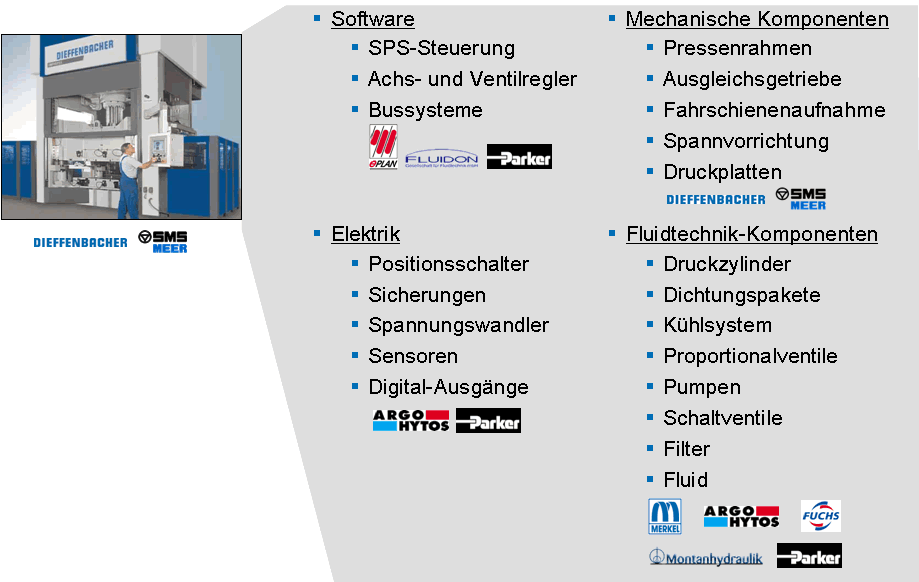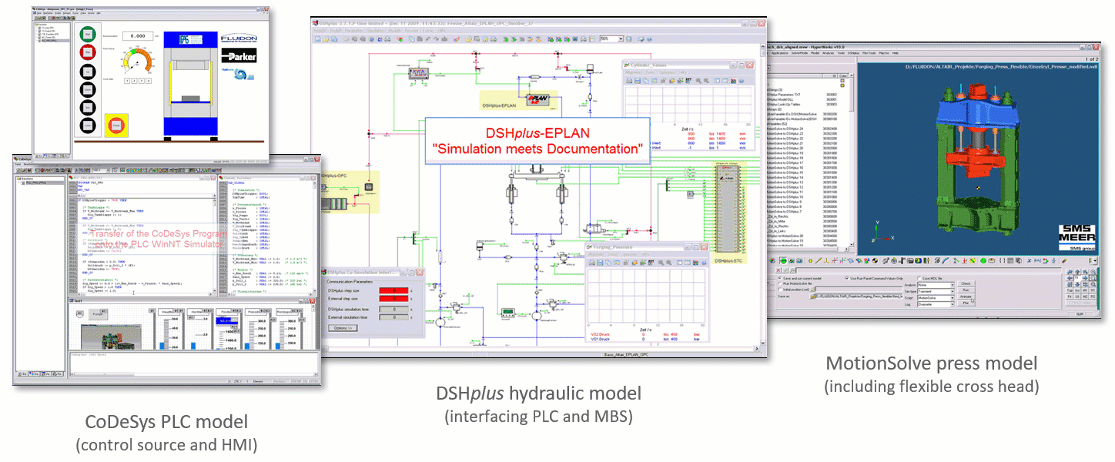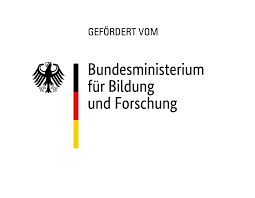Fluidtronic - Development environment for fluid power & mechatronic systems
The objective of the collaborative project "Fluidtronic" is to identify inherent system risks at an early stage and to ensure reliable commissioning and system performance throughout the product's service life. This is only possible if the cooperation of the involved disciplines and companies is better synchronised and integrated for efficient product development. For this reason, the design of a fluid power & mechatronic system requires a cross-company platform known as a development environment. The development environment combines all disciplines and activities in the product development process as well as the methods, tools and IT systems used and the associated product and process information from system design to commissioning and feedback of operating data throughout the entire life cycle.
Within the framework of the research project, a hydraulic forging press was used as a reference application of a fluid power & mechatronic system. The complex structure of this press combines a wide variety of subsystems from the technical domains of hydraulics, mechanics and electronics as well as control technology. Above all, its large dimensions require that all subsystems can only be assembled for the first time during the actual commissioning of the system. Since this has to be carried out at the customer's premises due to the dimensions of the system, the customer will notice all discrepancies and malfunctions in the interactions of the subsystems during commissioning. Furthermore, troubleshooting at this late stage of development is associated with a high expenditure of time and money.
Motivation
Modern fluid power machinery and systems have changed from controlled mechanical systems to complex mechatronic products with hydraulic, pneumatic, mechanical and signal-processing components. In many cases, the combination of hydraulic drives with electronic control technology leads to advantageous properties of the overall system. A prerequisite for reliable operation is the correct matching of all components and their properties.
The interlinking between the disciplines involved leads to complex interactions and requires an adapted development environment to ensure product reliability. One of the main goals of the Fluidtronic project was therefore to ensure more reliable, faster commissioning and system performance over the complete product lifetime, whereby inherent system risks must be identified and eliminated early in the development process with a mechatronic development environment.
In order to make this possible, it is necessary to better synchronise, schedule and integrate the cooperation of all the specialist disciplines and companies involved. This is to be achieved by means of a cross-company mechatronic development environment for fluid power & mechatronic systems, in which a digital twin of the plant is used.
For further information please visit: Fluidtronic

Solution
There is great potential for optimisation in the - so far - scarcely used assistance by simulation software. Fluid power & mechatronic simulation programs are often not used during development, but are used only in cases where an experience-based design is not sufficient, or when malfunctions occur during operation of the system. The insufficient integration of fluid power simulation tools into the development process makes it difficult to understand the overall system during the early development phases and makes the subsequent commissioning of the plants increasingly complex.
The consistent use of software tools is therefore an important aspect for optimising the development process. The development and implementation of new software models and methods transforms the conventional development process into computer-aided product development, which allows virtual plant design and virtual commissioning to be carried out at a very early stage.
The figure below shows the simulation network of DSHplus, CoDeSys and MotionSolve created in the Fluidtronic project. Here, DSHplus is not only responsible for the fluid engineering simulation, but also takes over the task of controlling the SiL simulation. The control development in CoDeSys is connected to DSHplus via OPC coupling and the MotionSolve multi-body simulation program is coupled with DSHplus as a classic co-simulation.





